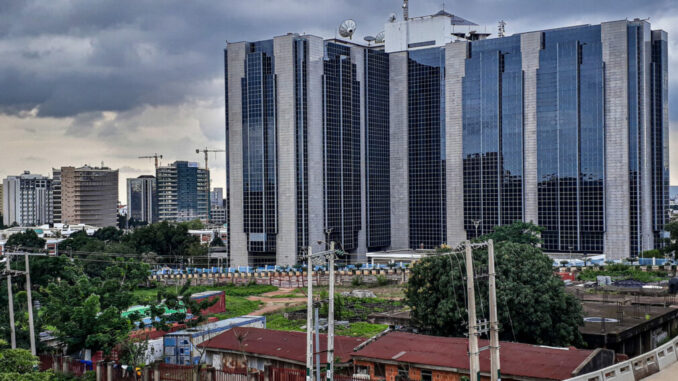
So why does the CBN’s Monetary Policy Committee go through the motion of regularly tinkering with an orphaned instrument? As performance art, maybe. Something to engage in as passionately as others elsewhere in the profession do ― in the hope that one day, by diligently mimicking central banks in advanced economies (even when we do not get their “Why?”), they may obtain access cards to the one global event that confirms them as central bankers: the Jackson Hole Economic Symposium…
The Central Bank of Nigeria (CBN), last week, raised its benchmark interest rate by 100 basis points to bring the monetary policy rate (MPR) to 17.5%. This was the fifth time at back-to-back meetings of its policy committee (the Monetary Policy Committee ― MPC) that the central bank has put up rates. As with most other economies around the world that have seen their central banks hike rates, the problem is with inflation. Until December last year, headline inflation in the country, computed on an annual basis, had risen for 11 successive months. Although lower than the 21.47% which it printed in November, the 21.34% by which prices included in the National Bureau of Statistics’ “12 Classification of Individual Consumption by Purpose (COICOP) functions and all-items levels” rose, is unseasonably high.
In keeping with the policy consensus around the world (Turkey being the most glaring exception to this trend), the Central Bank of Nigeria has sought to stave off rising prices by aggressively raising its benchmark rate. Ordinarily, this mechanism works in a simple way. What we call “domestic money banks” (commercial banks) lend to the markets ― businesses and individuals. And to do this, they sometimes have to borrow money from the central bank. The rate at which the central bank lends to commercial banks, should ordinarily describe the floor price of money in any economy. In pursuit of its price stability mandate, the central bank puts up rates to combat inflation, and vice versa. Higher rates drive up lending costs, and returns on deposit, effectively choking off both business investment and consumer spending.
This is one reason why concern globally, following the aggressive pace of monetary tightening by central banks in the West (especially the US Federal Reserve), has been over the recession which many analysts believe will follow. To the credit of the CBN, though, it appears to have managed to balance this trade-off between tightening monetary conditions and decelerating economic activity. Crucially, the CBN has raised its benchmark rate aggressively, without at the same time threatening either business investment or consumer spending.
The economy may not contract as a result. Nor will inflation fall. Unsurprisingly, while over the last 10 months, the central bank’s benchmark rate rose by 6% annually, the headline inflation rate only dropped 0.13% to December’s 21.34%.
With marginal effect on lending or deposit rates, the CBN’s aggressive tightening of the monetary policy rate has not meant a tightening of monetary conditions. Lending rates have not gone up. Neither have deposit rates. This Goldilocks outcome shows up in market rates that are markedly below both the annual headline inflation rate and the CBN’s benchmark rate. For example, the coupon on 40-year bonds is 9.00%. The one-year treasury bill rate is at 13.00%. And savings deposit rates, fixed by the regulator at no more than 30% of the Monetary Policy Rate (MPR), is at 5.25%. With inflation where it is, investors who hold any of these instruments without being compelled to do so, intentionally destroy value.
The economy may not contract as a result. Nor will inflation fall. Unsurprisingly, while over the last 10 months, the central bank’s benchmark rate rose by 6% annually, the headline inflation rate only dropped 0.13% to December’s 21.34%.
So why does the CBN’s Monetary Policy Committee go through the motion of regularly tinkering with an orphaned instrument? As performance art, maybe. Something to engage in as passionately as others elsewhere in the profession do ― in the hope that one day, by diligently mimicking central banks in advanced economies (even when we do not get their “Why?”), they may obtain access cards to the one global event that confirms them as central bankers: the Jackson Hole Economic Symposium, the three-day annual international conference organised by the Federal Reserve Bank of Kansas City at Jackson Hole, Wyoming.
If process transparency and readily available information from the regulator are key to properly functioning markets, should we presume basic levels of market sophistication? Apparently not. For the domestic market does not seem to expect more from the central bank than it currently dishes out.
Or better still, it is simply signposting of a very public nature. Except that, in this case, we are at a loss as to the why, or the how of the policy demarche. Is the effect of the central bank’s rate hike largely symbolic, then? Around the world, central banks make a song and a dance of communications and forward-guidance as central to the efficacy of their policymaking: regularly apprising markets of their thought processes and policy goals. Ensuring thereby that there are neither unanticipated shocks to markets, nor information asymmetries amongst financial market participants.
If process transparency and readily available information from the regulator are key to properly functioning markets, should we presume basic levels of market sophistication? Apparently not. For the domestic market does not seem to expect more from the central bank than it currently dishes out.
Uddin Ifeanyi, journalist manqué and retired civil servant, can be reached @IfeanyiUddin.
END

Be the first to comment